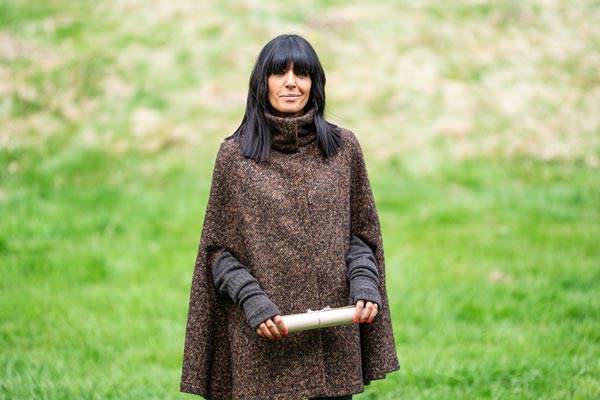There are many positive things happening outside in autumn. Harvesting edibles, including carrots, kale, leeks, spinach and Brussels sprouts, continues, depending on the weather and the region. It’s the season for swedes, turnips and pumpkins. Even beetroot does well if you stagger your planting times. There are some late pears and apples to be enjoyed, and foraging will bag you some berries, including sloes and rosehips.
Rooting for Autumn
It’s the very best month in which to plant trees. The bare-root season has begun, which brings down the cost of buying both trees and shrubs. Plant them during November so their roots can start to establish before the really cold weather sets in. They will be ready to romp away in spring.
While many people plant fruit trees, only a few think of nuts. Four types can be grown in the UK: walnuts, hazelnuts, sweet chestnuts and almonds, although the latter need special care, including a protected site and frost-free winters. Most gardens can only cope with a smaller tree variety and there are dwarf cultivars ideally suited for this purpose.
Hazel Trees
Hazelnuts are probably the easiest of all the nut trees but you will need at least two for pollination purposes. It’s best not to plant them in soil that has been too heavily enriched, as this can cause them to put on a lot of foliage growth in favour of fruit.
There is some confusion over different types of hazelnuts. The wild tree is Corylus avellana and this produces hazelnuts – squirrels often get to them before humans! These were used to cultivate larger nuts which are known as cobnuts, famously grown successfully in Kent. Filberts are larger still and they were cultivated from a non-native variety of hazel tree called Corylus americana.
Unless you have a very large garden, you would be wise to buy a Corylus avellana cultivar, because the native tree can grow up to 12 metres tall, with a spread of up to 8 metres. The nuts are ready to harvest from late August when the husks turn yellow.
Walnut Trees
The common walnut is Juglans regia and this large tree can reach 30 metres tall. Some cultivars are self-fertile and smaller. A popular tree is Juglans regia ‘Broadview’, which is more compact and should reach only up to 8 metres tall. The nuts can be harvested from late August through to November, once the green hulls begin to turn darker and eventually crack open. They can be eaten raw, dried in a low oven or pickled.
Sweet Chestnut Trees
Not to be confused with the conker-producing horse chestnut, Castanea sativa – or Spanish chestnut – is another large tree, reaching a height of up to 35 metres. The nuts are used in chestnut stuffing and for roasting. There are smaller cultivars such as C. ‘Marron de Lyon’, which produce fruit at a younger age. The spiky cases have many prickles and it’s best to wait until they fall to the ground at harvest time. You’ll need sturdy gloves!
Almond Trees
Almonds are a type of Prunus and therefore related to cherries, plums and apricots. Native to North Africa and the Mediterranean, they’re not ideally suited to the UK climate but it is possible to plant them in a warm, protected space where they will not only produce beautiful blossom in March, but green fruit by the end of May. Cultivars such as ‘Ingrid’ work better in the UK climate. The fleshy covering on the fruit gradually dries and eventually splits to reveal the almond seed, encased in a shell.




